Key takeaways:
- A logo serves as the visual first impression of a brand, evoking emotions and shaping perceptions.
- Key elements of effective logos include simplicity, versatility, and relevance to the target audience.
- Researching consumer preferences and engaging them in the design process enhances logo effectiveness.
- Continuous feedback throughout the design stages helps refine and elevate the final logo concept.
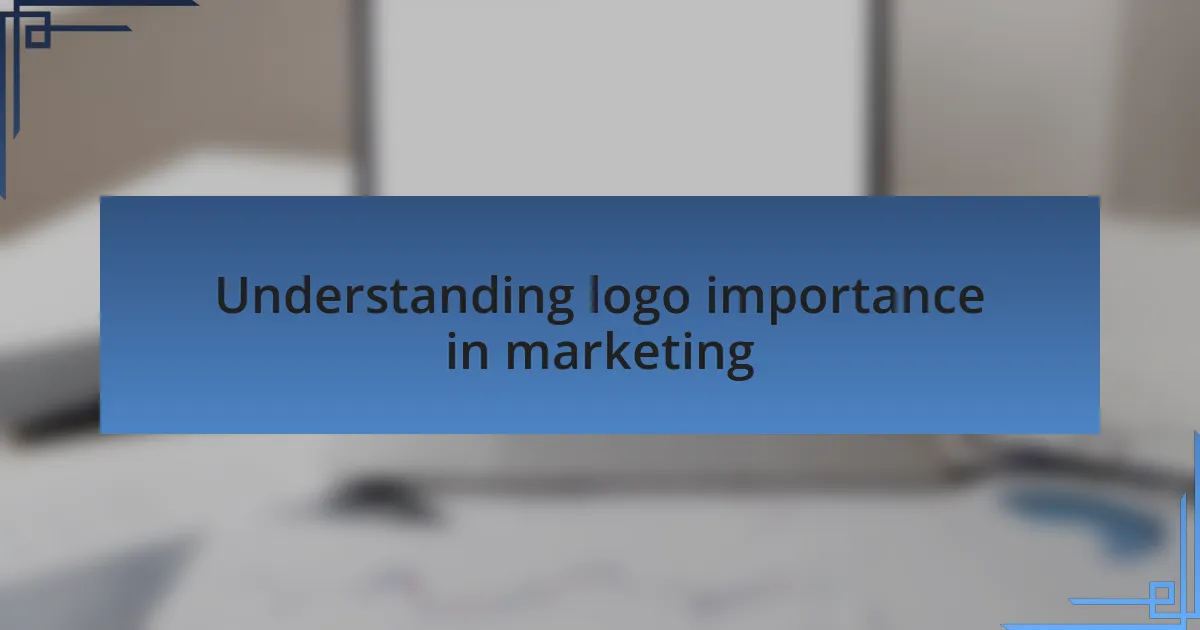
Understanding logo importance in marketing
A logo isn’t just a design; it’s the visual first impression of your brand. I remember when I first encountered a logo that caught my eye—it was simple yet unforgettable. That moment reminded me how powerful a well-crafted logo can be in capturing attention and conveying a message.
Think about it: when you see the iconic swoosh of Nike or the golden arches of McDonald’s, what comes to mind? Instantly, you connect those logos with their respective brands and what they stand for. It’s fascinating how a mere image can evoke feelings and shape perceptions in the blink of an eye.
Crafting a memorable logo is an emotional journey; it should resonate not just with your audience, but also with your mission. From my experience, I’ve seen how a logo can create loyalty and familiarity, breathing life into a brand by forging emotional connections with consumers. Isn’t it incredible how something so seemingly simple can carry such profound weight in marketing?
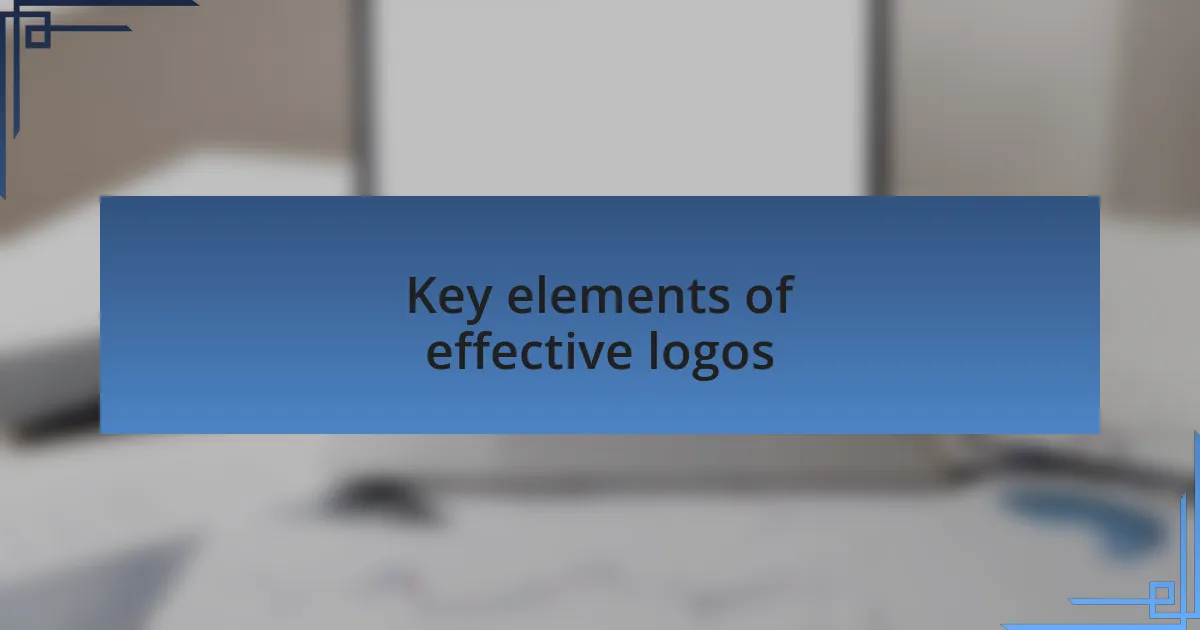
Key elements of effective logos
When I think about effective logos, the first element that comes to mind is simplicity. I’ve learned that a great logo should be easy to recognize and remember. One logo that stands out for its simplicity is the Apple logo. It’s just an apple with a bite taken out, yet it conveys innovation and creativity in its design.
Another key element is versatility. A logo needs to work across various mediums and backgrounds. I remember working on a project where we had to test the logo in different sizes and colors. The best designs maintained their integrity whether on a business card or a large billboard. This adaptability is crucial for any brand, as it ensures the logo looks great and functions well no matter where it appears.
Lastly, relevance is vital. The logo must resonate with the industry and the target audience. During one of my projects for a local coffee shop, we chose earthy tones and shapes that reflected warmth and comfort. Those choices spoke directly to the café’s mission of creating a cozy space. Isn’t it inspiring how thoughtful design can mirror a brand’s core values?

Researching your target audience
Understanding your target audience is essential when creating a memorable logo. I once conducted a deep dive into consumer preferences for a project aimed at trendy sports apparel. I discovered that age, lifestyle, and even values play a significant role in how people perceive design. How well do you know the people you want to reach? This initial research can illuminate not just what they like but also what will resonate on an emotional level.
While working on that logo project, I utilized surveys and focus groups to gather insights. It was fascinating to see how different demographics reacted to various design elements. For instance, younger audiences gravitated towards bold colors and modern typography, while an older segment preferred a more classic approach. I realized that these preferences aren’t just aesthetic; they communicate identity and community. Isn’t it amazing how a logo can evoke such strong feelings based on who is looking at it?
Digging into social media trends also proved helpful. I explored platforms where the target audience hung out, immersing myself in their conversations and interests. This research helped me understand their lifestyle, aspirations, and even pain points. By connecting with them through visual elements that spoke their language, I was able to create a logo that felt like part of their world. Have you taken the time to listen to your audience yet? It can transform your logo from just a design into a compelling story.
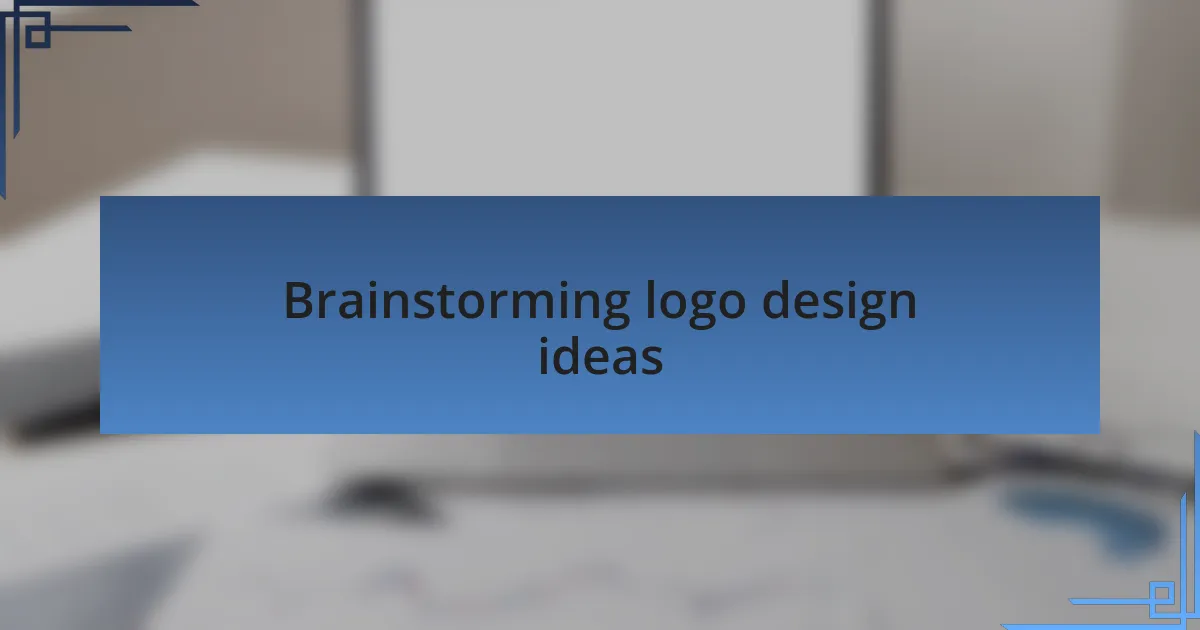
Brainstorming logo design ideas
Brainstorming logo design ideas is an invigorating process. I often start with a simple technique: mind mapping. When I was sketching ideas for a tech startup logo, I jotted down keywords associated with the brand, like “innovation,” “speed,” and “connectivity.” This visual representation not only sparked creativity but also helped me link concepts that I hadn’t considered before. How often do you let free association guide your creative flow?
Another approach I’ve found valuable is to create visual inspiration boards. I recall curating a collection of logos and images that resonated with the brand’s ethos. I compiled these visuals from various sources—magazines, Pinterest, and even nature. Each piece inspired a different facet of the logo design, prompting me to think differently about color palettes and shapes. Isn’t it fascinating how inspiration can emerge from the most unexpected places?
Finally, collaborating with a diverse team can significantly enhance the brainstorming process. During one project, a colleague suggested we hold a workshop where everyone contributed their ideas without judgment. The result was a whirlwind of creativity! We ended up blending various thoughts into a cohesive design that encapsulated the brand’s essence. Have you considered the power of collaboration in your brainstorming sessions? It can turn a simple idea into something extraordinary.
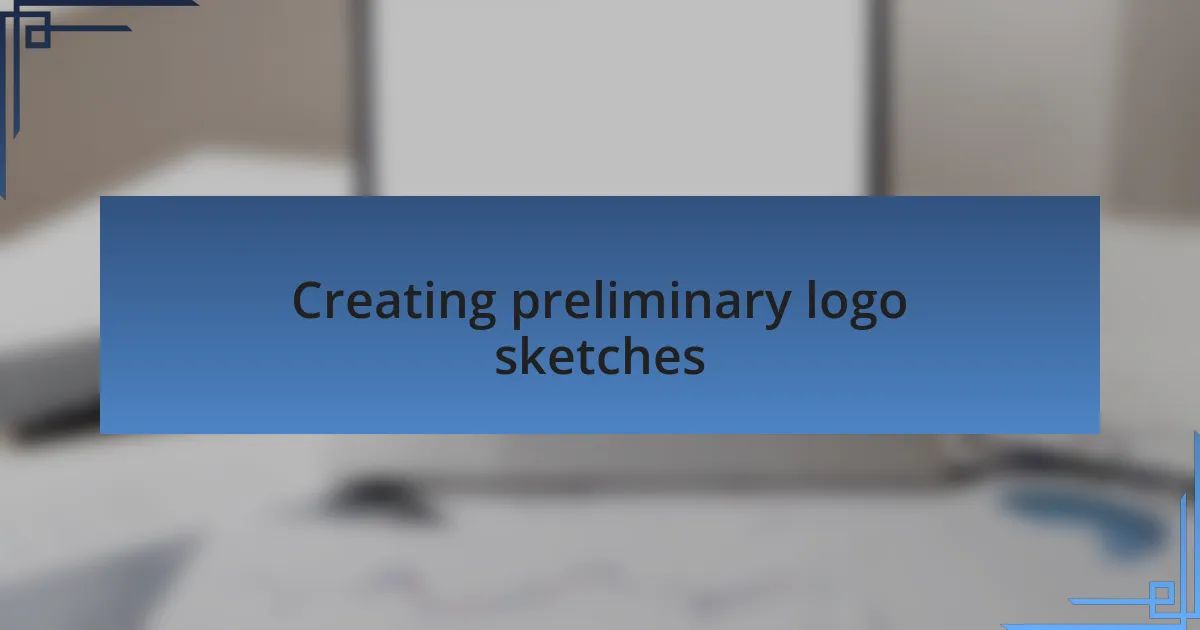
Creating preliminary logo sketches
Creating preliminary logo sketches is where the magic begins to take shape. I remember sitting at my desk, pencil in hand, and feeling the excitement of translating abstract ideas into visual forms. The initial sketches don’t need to be perfect; they serve as a playground for experimentation. How do you approach your first drafts? I find that the more I allow myself to doodle freely, the more unexpected elements emerge that I later refine into the final design.
As I worked on my own logo, I let my intuition guide the sketches. One line may lead to an inspired curve, which then sparks an entirely new concept. It’s almost like a dance, where each stroke invites the next. I often remind myself that the journey of creating concept sketches is as critical as the end result. It is in these initial stages that I often stumble upon ideas that resonate deeply and align with the brand’s vision.
I also like to revisit my preliminary sketches after a break. When I look at them with fresh eyes, it often reveals new potential that I might have overlooked in the moment. It’s a fascinating experience to see how my perception evolves. Have you tried stepping away from your designs? In my experience, taking a step back can bring clarity and inspire fresh directions, ultimately enhancing the final logo concept.

Seeking feedback on logo designs
Gathering feedback on logo designs is a crucial step that can significantly shape the final product. I remember my first round of feedback sessions; I was both excited and nervous. Listening to various perspectives opened my eyes to elements I hadn’t considered—some ideas truly challenged my creative assumptions. Have you ever noticed how an outsider’s viewpoint can shed light on design flaws or strengths you might have glazed over?
When seeking feedback, I often look for insights not just on aesthetics but also on emotional responses. After sharing a few logo variations with friends, I was surprised by the diverse feelings they triggered. One design sparked joy and playfulness, while another evoked a sense of seriousness and professionalism. This emotional feedback is invaluable; it helps refine the logo to ensure it resonates with the target audience effectively. Have you explored how different designs make people feel? Their gut reactions can guide your choices more than you might expect.
Lastly, I’ve learned that seeking feedback isn’t a one-time affair. I frequently revisit my designs as they evolve, asking for thoughts at various stages. In one particular instance, after making adjustments based on initial input, I presented the refined logo to a focus group. Their enthusiasm was palpable, and their suggestions helped me take the logo to the next level. Keeping the dialogue open allows for a dynamic creative process. How often do you loop back to your circle for their thoughts? Engaging in this ongoing conversation can spark innovation and lead to a truly memorable logo.
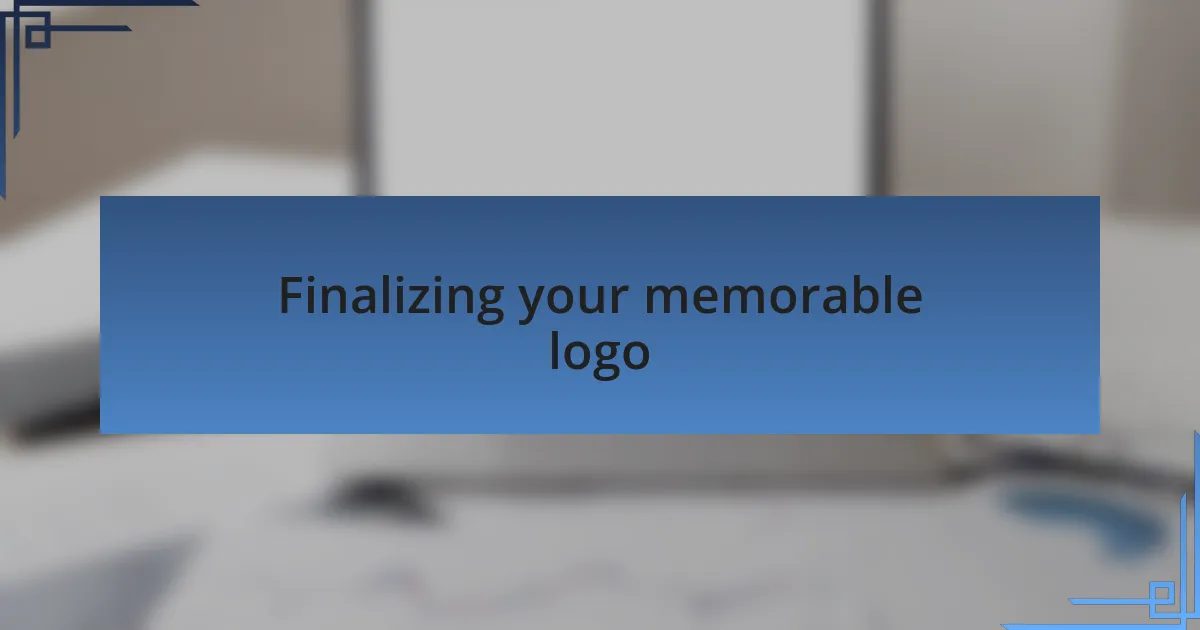
Finalizing your memorable logo
Once you’ve gathered all that feedback, it’s time to narrow down your options. In my experience, this is where it can get tricky. I often find myself torn between the designs I love and the suggestions my audience has provided. Have you ever felt that tug-of-war between personal preference and collective input? I recommend creating a mood board showcasing the logo variations that resonate most, which can help visualize how different elements align with the brand’s identity.
As I finalized my logo, I focused on polishing the details that mattered most. I remember scrutinizing the spacing and color combinations, spending late nights tweaking each element until everything felt just right. It’s astonishing how a tiny adjustment can elevate the overall look. Have you taken a step back to really examine those finer points? Sometimes it’s those small tweaks that make a massive difference in how a logo is perceived.
Finally, hold onto that emotional connection you’ve established through feedback. I vividly recall the moment when I saw my logo come to life in a real-world application—on business cards and social media profiles. That feeling of satisfaction and pride was indescribable. How will you celebrate your own final logo reveal? Keeping that emotional thread at the forefront ensures your design truly reflects the essence of your brand, making it memorable long after the initial unveiling.